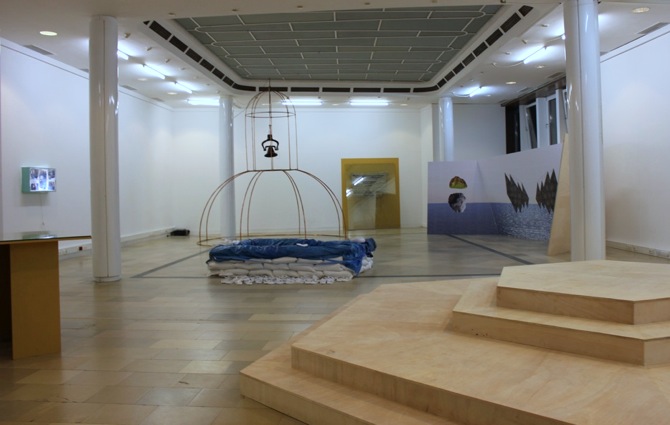
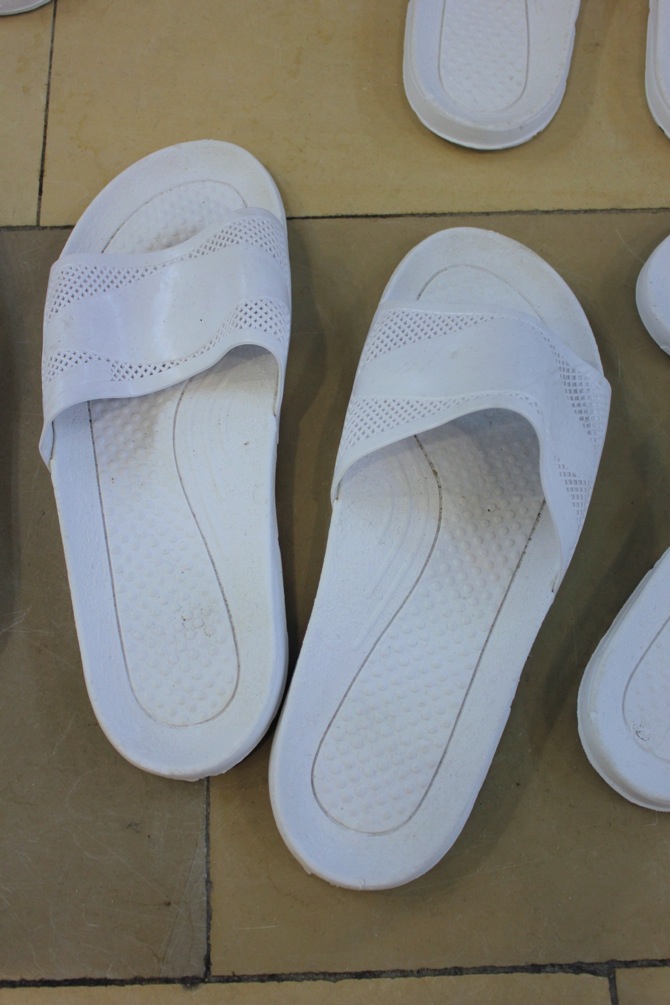
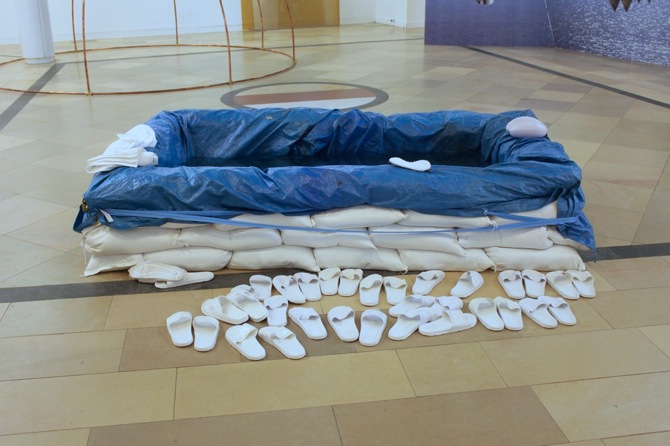

from the top: (1) installation view 'Time To Recollect' at Stadthausgalerie Münster; (2+3) Ruchama Noorda (Civic Virtue) "Babtisterium"; (4) Sil Krol "Hexagonal Platform"; courtesy the artists, photos by artfridge
Münster, a classic mid-sized German student city, started to form in the end of the 8th century. While city planners have been reconstructing the old city-scape and tried to erase the sight of WW2's destruction, history has left its traces. With this in mind, the current group exhibition "Time To Recollect", including the artist collective CIVIC VIRTUE and Sil Krol, discusses questions on the the writing and the perception of history through the example of its location at Stadthausgalerie Münster. The two curators Suzie Hermán and Jürgen Dehm, who are both participating the curatorial scholarship program followup at Schloss Ringenberg, were invited to assemble contemporary German and Dutch positions to put a spotlight on the individual construction of history. We spoke to Jürgen Dehm about the exhibition's approach to history, religion and its relation to the city of Münster.
When you were asked to curate the exhibition at Stadthausgalerie Münster, why did you and Suzie Hermán approach the topic of historicity?
Suzie is from Amsterdam, I live in Berlin. We were not familiar with Münster at all. It is located in the City centre, which gives the impression that it is a historical district. But if you look closely, you realise that Münster really is a virtual city: almost every building in its centre just looks old, but in fact they were reconstructed around the mid-20th century, after bombings in World War II destroyed more than 90% of the old city. Also with the Westphalian Square of Peace right in front of the Stadthausgalerie and the historic town hall with its Hall of Peace around the corner, we realised that only an exhibition about the complex history of Münster would make sense at Stadthausgalerie.
'Time to Recollect' is a group show that reflects on the perception and the construction of history. Do you consider history as something that is artificially reconstructed?
To deal with the terms of history and memory in an exhibition beyond a history museum is, of course, different than trying to examine historical developments in an academic sense. ‘Time to Recollect’ is on the one hand a plea for a pause in the ongoing progress of history, to find a moment to remember and to think, and on the other hand it emphasizes a looking-back into the history of Münster, the city where the exhibition takes place.
What made you bring together the Amsterdam based collective CIVIC VIRTUE and the Dutch newcomer Sil Krol?
We chose to work with CIVIC VIRTUE and Sil Krol, because we felt that they were able to deal with the special exhibition space of the Stadthausgalerie in an appropriate way. Referring to the old model of “Bildungsreise”, CIVIC VIRTUE had many international exhibitions, which dealt with the specific place where their exhibition was on display. Sil Krol generally does public interventions, in which he creates stages or platforms for people to stand on and evoke discussions. In choosing to combine CIVIC VIRTUE and Sil Krol we have an artists dealing specifically with the history of Münster and also an approach to the whole discussion about history and ways to reflect on a more general level.
The city of Münster is also reflected some of the exhibited art works. For example, Brian McKenna from CIVIC VIRTUE relates his sound-sculpture "Dome Glocke 1" to the sound of church bells in the city. How is Ruchama Noorda's paddling pool "Babtisterium"related to the city ?
Ruchama Noorda's "Babtisterium" draws on the famous period of the Anabaptists in Münster in the 16th Century, which climaxed in the public execution of their leader John of Leiden in front of the St. Lamberti church. The work ironically reflects how people try to reach physical and spiritual purification today. That is why the work refers to spa visits as a contemporary method of recharging one’s inner battery. But by using sandbags for the scaffolding, Ruchama’s pool also evokes images of war and violence, conditions of threat in which mounds are used as protection, and therefore reminds of the brutality during the time of the Anabaptists in Münster. And though it’s content deals with peasant’s revolts and the “commons”, Geirthrudur Finnbogadottir Hjorvar’s “Triptych” also refers to religious history through its three panels.
The "Hexagonal Platform” by Sil Krol is a minimalist platform installation, inviting visitors to step on top of it. Was it important to you and Suzie Hermán that the audience can interact?
The work takes a religious account and minimises its spiritual content. It is based on the shape of the pulpits in churches, a place from which the preacher speaks to his congregation. In 'Time to Recollect' the exclusive limitation of persons who have the right to enter the "Hexagonal Platform" is completely open. Everybody is allowed ascend the “Hexagonal Platform” and start a debate about whatever they like.
What is the focus of the extensive side-program that accompanies the exhibition?
How can we think about history and make history visible – that’s the core of 'Time to Recollect'. By choosing Chris Marker’s iconic “Sans Soleil” from 1983 as the first film of the accompanying program in the Linse cinema, we tried to bring our concern one step further into a general discussion. And with its comparison of the Shakers, a religious community founded in the 18th century who practiced self-denial and ecstatic trance dances, and the emergence of rock music as a religion for teenagers, Dan Graham’s “Rock My Religion” combines a spiritual history with a social one in a provocative way. By combing parts of an essay by Sigmund Freund with animations of iconic works of conceptual and performance art, Agnieszka Polska’s “The Forgetting of Proper Names” negotiates the question of how Art History deals with ephemeral works, what lasts and what fades into the past. And Giles Bailey will come from London to perform “Tom/Lütz: Two Scenes in 1983”, an experimental approach to historiography and the conventions of ordering histories.
Is it time to recollect?
Think about it. Definitely.
TIME TO RECOLLECT
CIVIC VIRTUE and Sil Krol
11.10 - 10.11.2013
Finissage: Saturday, 9.11, 19.30h
STADTHAUSGALERIE
Platz des Westfälischen Friedens
(Rathausinnenhof)
Münster
Opening Hours: 12-18h
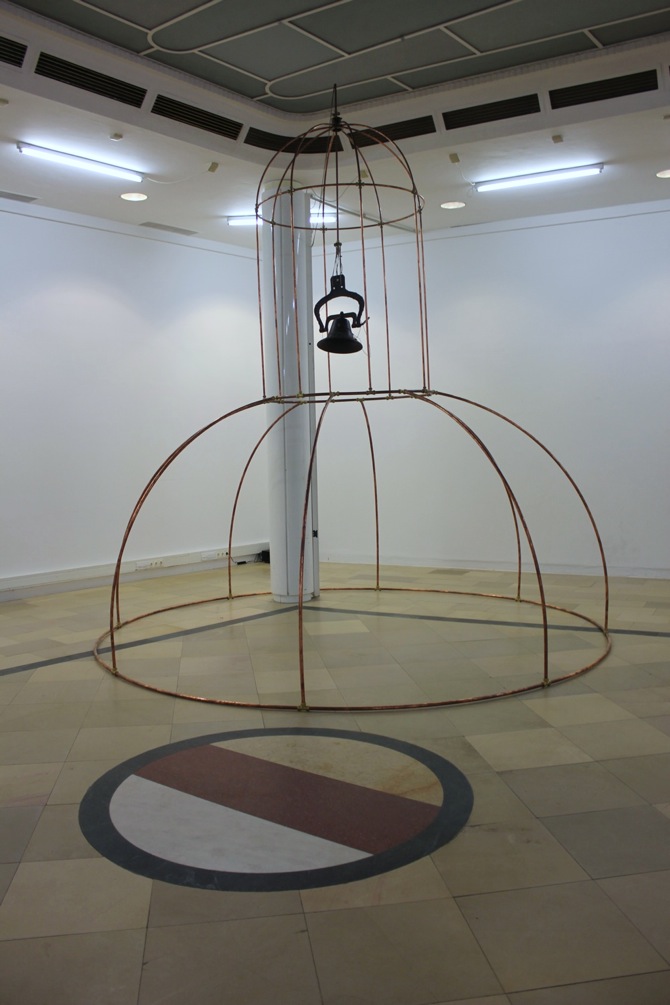
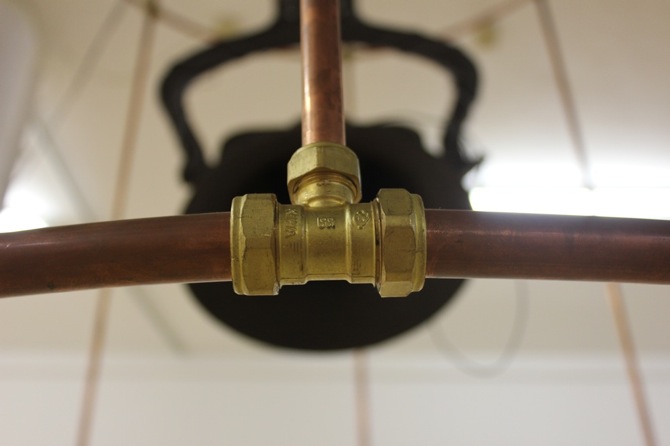
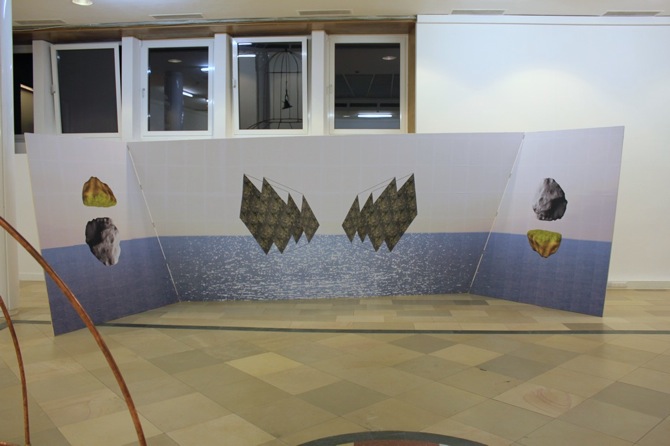
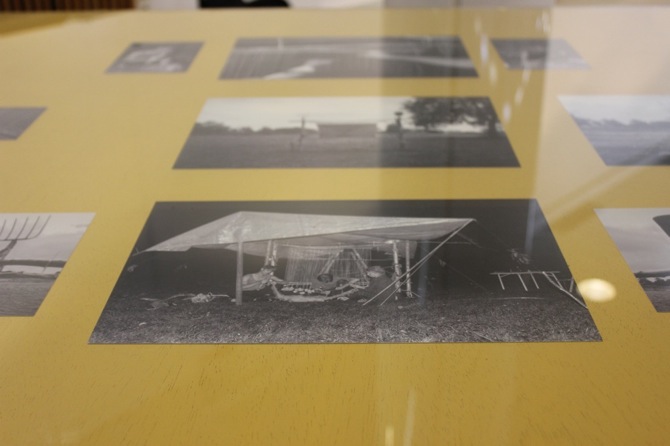
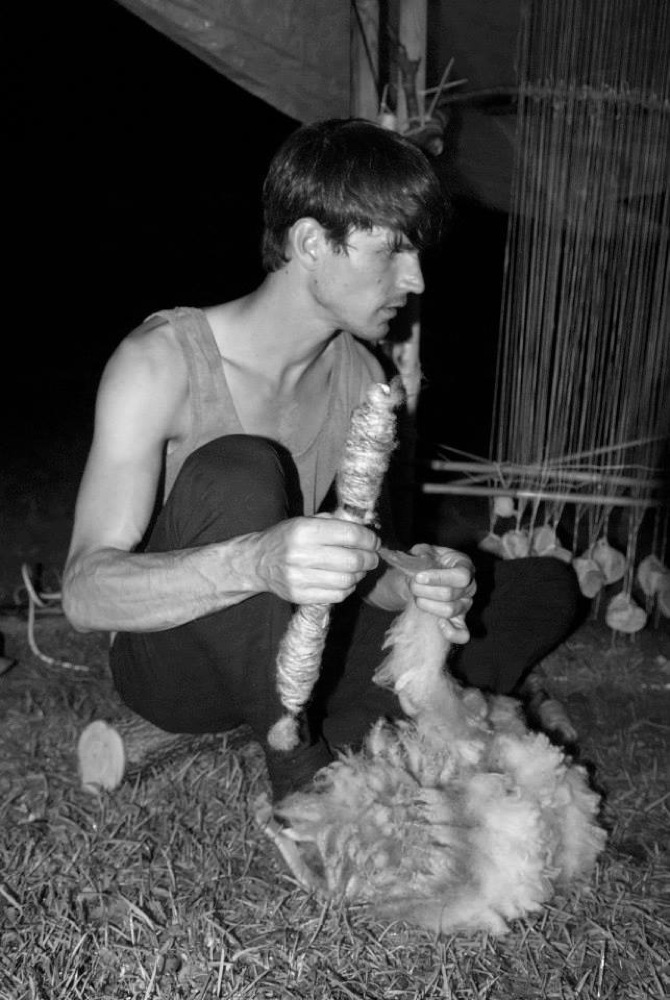
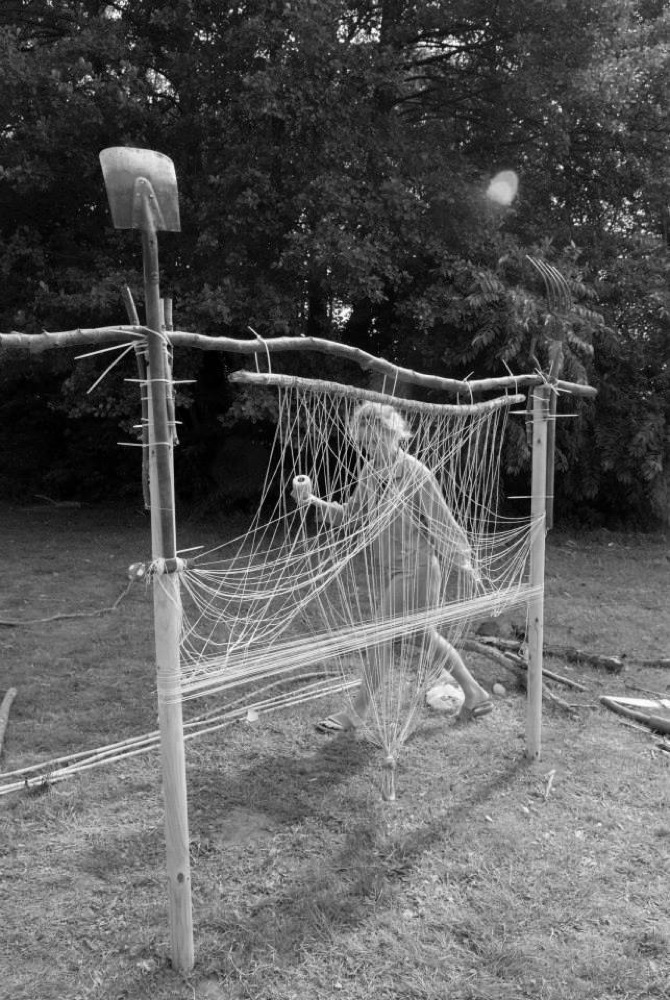

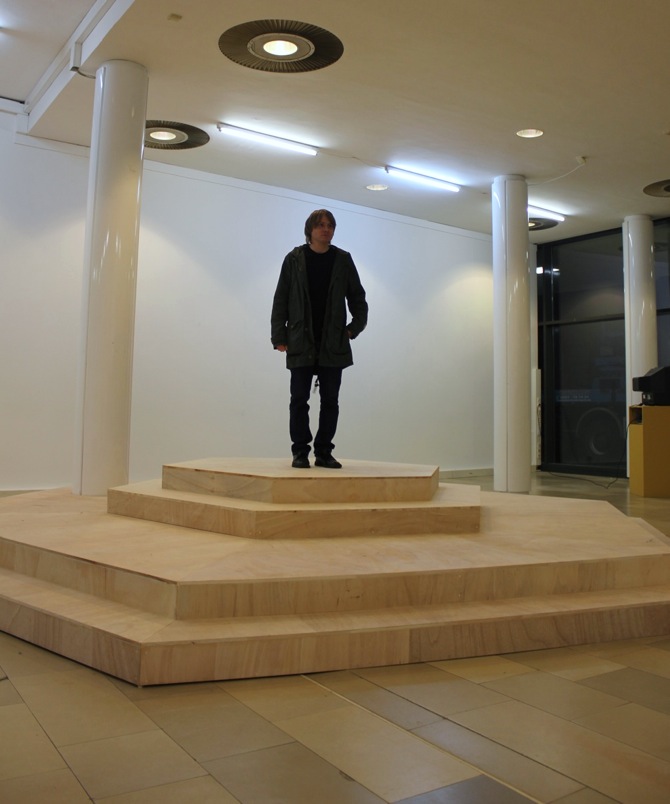
from the top: (1+2) Brian D. McKenna (Civic Virtue) "Dome Glocke 1"; (3) Geirthrudur Finnbogadottir Hjorvar (Civic Virtue) "Tryptich"; (4-6) Gijsbert Wouter Wahl (Civic Virtue) "Air Loom. A word is a broken sign"; CIVIC VIRTUE "Gewebe"; Curator Jürgen Dehm"; courtesy the artists, photos by artfridge
